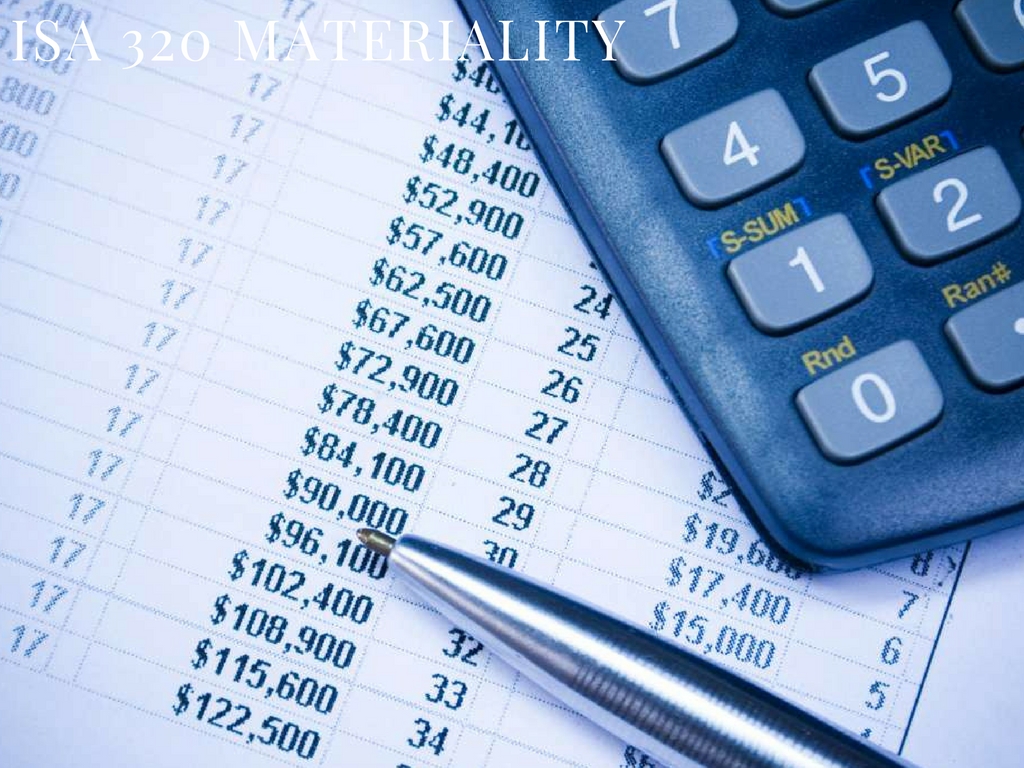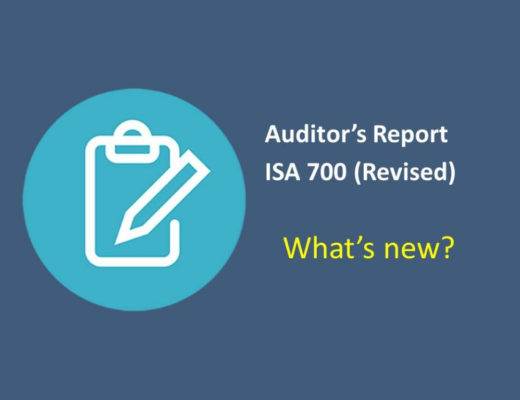We are very familiar with materiality during our audit procedures. We need to determine it before or after audit procedures.
Why?
If an item is materially misstate in the financial statements what will be the effect in the audit report?
Or if not, how it will treat it by the auditors?
Not the above few questions, we face lots of various complex questions during our audit procedures.
What are those questions?
Let’s try to figure out some of those questions and answer those questions.
What is materiality?
Materiality is defined as the magnitude of an omission or misstatement that, individually or in the aggregate, in light of the surrounding circumstances, could reasonably be expected to influence the economic decisions of the users of the financial statements.
Materiality should be calculated at the planning stages of all audits. The calculation or estimation of materiality should be based on experience and judgment.
It should be reviewed during the audit.
In which way, an item might be material?
An item might be material due to it’s:
- Nature: It includes transactions related to directors, such as remuneration or contract with the company.
- Value: By virtue of their size.
- Impact: Some items may by chance have a significant impact on financial statements i.e. a proposed journal which is not material in itself could convert a profit into a loss.
How materiality assessments are helpful for auditors?
Materiality assessment will help the auditors to:
- Determine the amount of audit work to be performed
- Evaluate uncorrected misstatement during the audit
- Evaluate what level of error is likely to lead to a qualified audit opinion
Audit risk and materiality are closely connected because materiality helps to reduce audit risk to an appropriately low level.
After completing the audit procedures, the value of discovered errors should be aggregated to ensure the total error is still below tolerable error.
What is tolerable error?
The maximum error that an auditor is prepared to accept in a class of transactions or balances in the financial statements.
Tolerable error may be set at planning materiality, but it is usually reduced to, say 75% or even 50% of planning materiality so as to take account of the fact that auditors use samples which increase the risk of auditors giving an inappropriate opinion.
What are the appropriate measurements bases of materiality?
Financial statements are prepared for the users to make economic decisions. The focuses of the users to the financial statements are different to different users.
That’s why we need to find the appropriate measurement basis during materiality calculation. And the measurement bases are categorized to reflect users focus on the financial statements.
This includes:
- Earnings-based measures include pretax income; earnings before interest and taxes (EBIT), earnings before interest, taxes, depreciation and amortization (EBITDA); and gross margin
- Activity-based measures include revenues and operating expenses
- Capital-based measures include equity and assets
Where the company is close to break even or loss making or profit figure is volatile then total assets or revenue may be a more suitable basis.
Alternatively if profits are to be used an average figure over a number of years would give rise to a more appropriate materiality balance.
Note that extremely low materiality would result in substantially increased audit work which would be inefficient.
When none of the earnings-based measures, including normalized profit, is appropriate to determine PM or when the focus of the users of the financial statements is based on the activity of the entity and we are able to evidence this, we use revenues or possibly operating expenses for determining PM.
For some types of entities, the focus of the users of the financial statements may be more on assets or equity than earnings.
In such cases, assets or equity may be an appropriate measurement basis.
Do there any range for materiality calculation?
Once we determine the appropriate measurement basis for PM, we determine the percentage to apply to that measurement basis. We exercise professional judgment when determining which percentage to apply to the measurement basis.
The percentage used for materiality calculation may vary firm to firm. But an auditor should establish a base (or bases) to which a percentage factor is applied. The following bases are typically used:
| Value | Range |
| Total revenue | 0.5%-1.0% |
| Gross profit | 1.0%-2.0% |
| Profit before tax | 5.0%-10.0% |
| Total assets | 0.5%-1.0% |
| Equity | 1.0%-2.0% |
After calculation of materiality by using any of the percentage mentioned in the above table may give a fraction figure.
In that case, reasonable rounding (either up or down) is appropriate, for example, 5% of forecasted PBT of BDT 577,275,000 is BDT 28,863,750.
In this situation, it would be acceptable to determine PM at BDT 29 million.
If the company remains a fairly constant size, the materiality level should not change; similarly if the business is growing, the level of materiality will increase from year to year.
Note that the auditors will often calculate a range of values and then taken an average of all the figures produced as the preliminary materiality level. However, different firms have different methods and the above is just one of the available approaches.
The resulting balance would then be adjusted for any relevant qualitative factors including:
- Whether it is a first-year engagement
- Weakness in controls
- Material misstatements in prior years
- Risk of fraud
- Significant management turnover
- Unusually high market pressures
- Sensitivity of covenants in loan agreements to changes in the financial statements
- Affect of changes in results to earnings trends
Remember that in the auditor’s report, there is no requirement to specifically state the materiality level which has been applied.
What things need to consider during materiality calculation of group audits?
Materiality for the group financial statements as a whole will be determined when establishing the overall group audit strategy.
During the group audit it requires to consider the material subsidiary for audit purpose. Where a subsidiary is immaterial it can normally be ignored.
However in that case following matters should be considered very carefully:
- Apparently immaterial subsidiaries may be materially understated
- Several small subsidiaries may cumulatively be material
- Subsidiaries with a small asset base may engage in transactions of significant value and which may be relevant to understanding the group.
Why auditors may need to reassess materiality as the audit progress?
Materiality is a matter of judgment and is commonly determined using a percentage on revenue, PBT and total assets.
Auditor may require revising materiality during the audit because the materiality determined at the initial stage may be changes for the following reasons:
- The actual result of the audit client may be quite different to the forecast results on which the initial level of materiality was based. If audit started before year ending, auditor calculates it based of forecast results provided by the client. In that case it is usual that the actual outcome of the client at the year end will be different and hence the it will also need to be revised accordingly.
- A change in the client’s circumstances may occur during the audit, for example, a decision to dispose of a major part of the business. This again would cause the auditor to consider if the previously determined level of materiality were still appropriate.
- If adjustments are made to the financial statements subsequent to the initial assessment of materiality, then it’s level would need to be adjusted accordingly.
Note that in new level of materiality of the client should be ensure that sufficient appropriate evidence is obtained to support the audit opinion.
What will be the affect of estimation of likely misstatements?
Towards the end of the audit the auditor will aggregate the misstatements from each account balance or class of transaction (including both known and likely misstatements) and compare this with the preliminary assessment of materiality.
Comparison of the aggregated misstatements and it will determine whether the financial statements require adjustment.
Cautions handle with care!
- Materiality is a matter of judgment for the auditor.
- Bear in mind the focus of the company being audited.
- Always keep in mind the nature of the business.
- Some companies are driven by assets rather than the need for profits. In such case, it might need to be applied to assets. But for charities costs are driving factor and it might be considered in relation to these.
Extra help
- Try to calculate materiality before or during the audit period of a client
- Consult with audit supervisor/manager/partner of that particular client
- Work with a qualified manager/partner
“The Expert in anything was once a Beginner.”— (collected)





Important issue…